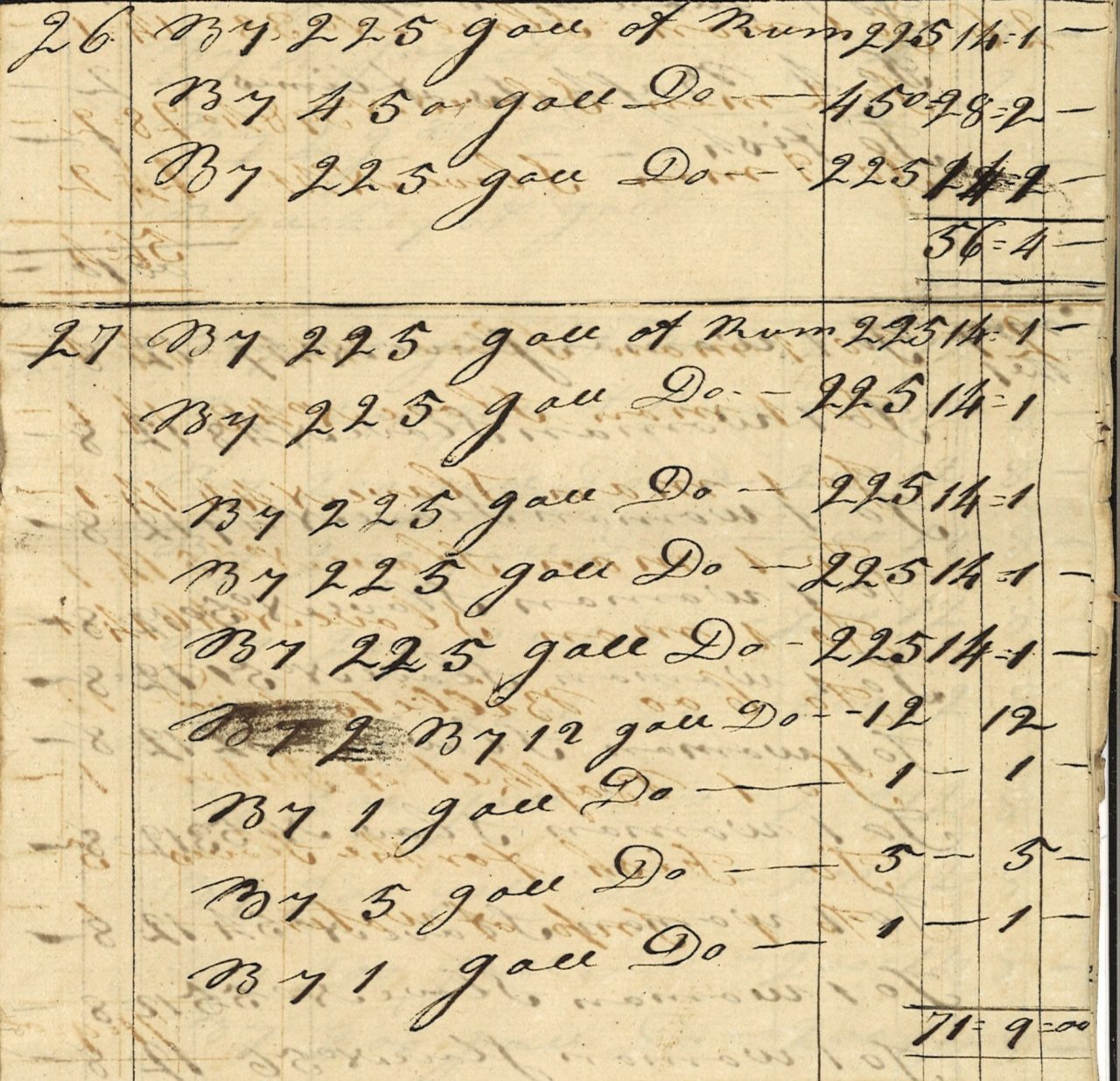
(Source: Wikimedia Commons)
Phoebe Bean presented “Relics, Rebels, and Rum” at the RI Historical Society (RIHS) where she works as librarian in their Mary Elizabeth Robinson Research Center. Particularly striking was a small part of her talk using a few images from the collection to illustrate the routine details of the North American Triangular Trade in which RI played a pivotal role: sugar to New England, rum to Africa and slaves back to the Americas.
The sloop Adventure was owned by brothers Christoper and George Champlin. Captained by third brother Robert Champlin, it departed Newport on October 25, 1773, with casks of rum and arrived at Cape Coast Castle, a major slave trading port on the Gold Coast (now Ghana) in Africa, on February 2, 1774, and continued to Anomabu, about 10 miles away, bartering rum to obtain 60 slaves, 33 men and 27 women. A few months later the sloop arrived at the Caribbean island of Grenada where the surviving 51 slaves were traded for sugar or molasses, which was brought back to Newport on July 25, 1774. A typical example, this is voyage 36474 in the online Slave Voyages Database.
The RIHS manuscripts collection holds the papers of Christopher Champlin, allowing us to trace out the mundane accounting records of what seems to us in retrospect a horrifying transaction. Here is the invoice on credit for the rum loaded at Newport, showing the casks by number and the content of each in gallons:
Here are corresponding rows from opposite sides of the trade book (ledger) showing the purchase of slaves (left) and the amount of rum paid for each (right), typically 225 gallons per slave:

(Christopher Champlin Papers, MSS 20, Collection of the RIHS)

(Christopher Champlin Papers, MSS 20, Collection of the RIHS)
Not every item is a slave purchase: The line second from the bottom records the purchase of “fish for the slaves” with 5 gallons of rum; two lines above that, “600 billets of wood” cost 12 gallons.
On a different voyage under Thomas Rogers as master, a bond for the same sloop was secured by “sundry nonenumerated goods,” meaning casks of rum to be traded for slaves:

(Christopher Champlin Papers, MSS 20, Collection of the RIHS)
According to Bean, the Adventure trade book was originally in the collection of George L. Shepley (1854-1924) and was transcribed in a version available at RIHS. The Champlin Papers, along with many other manuscript collections from the RIHS and the Newport Historical Society, were microfilmed as part of the series Papers of the Slave Trade, edited by Jay Coughtry. “His book, The Notorious Triangle [Rhode Island and the African Slave Trade], is one of the best resources about Rhode Island’s involvement in the slave trade,” Bean said.
Admission is free to the RIHS Robinson Research Center for all RI residents and all students. Inquiries can be sent to reference@rihs.org
